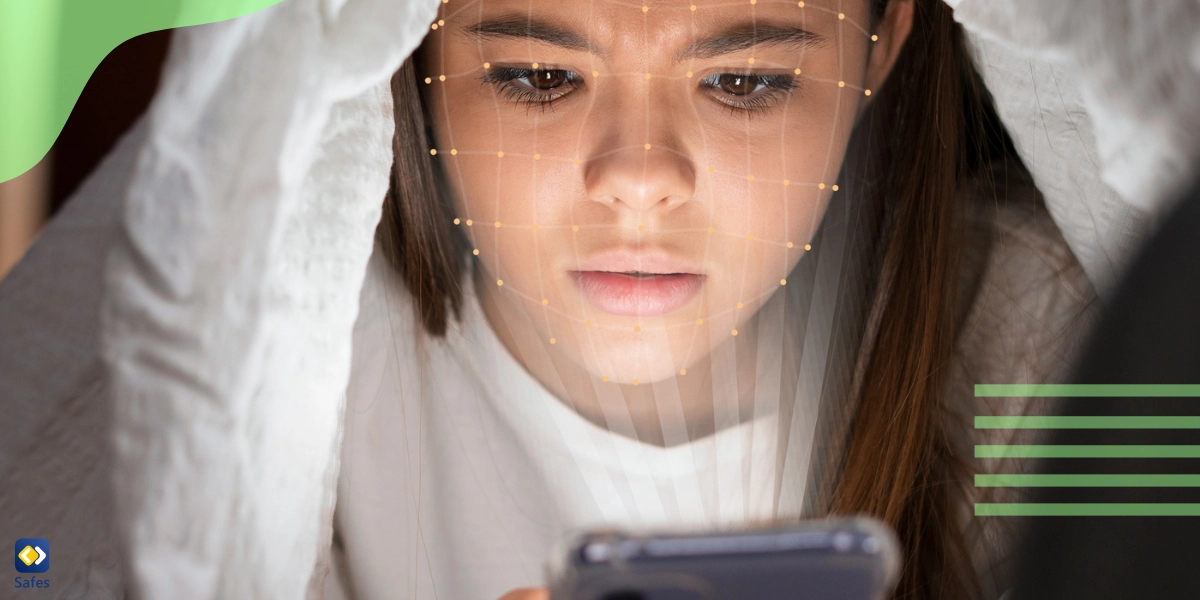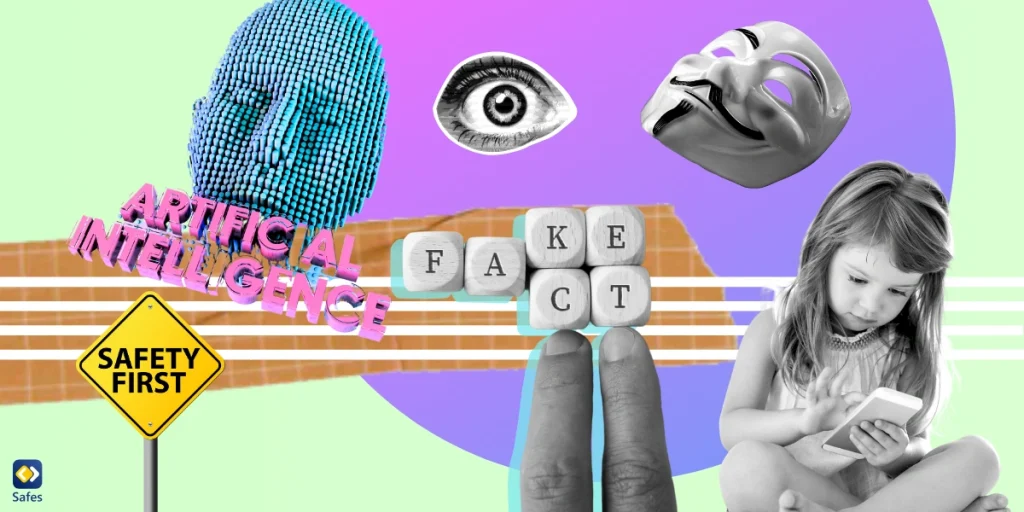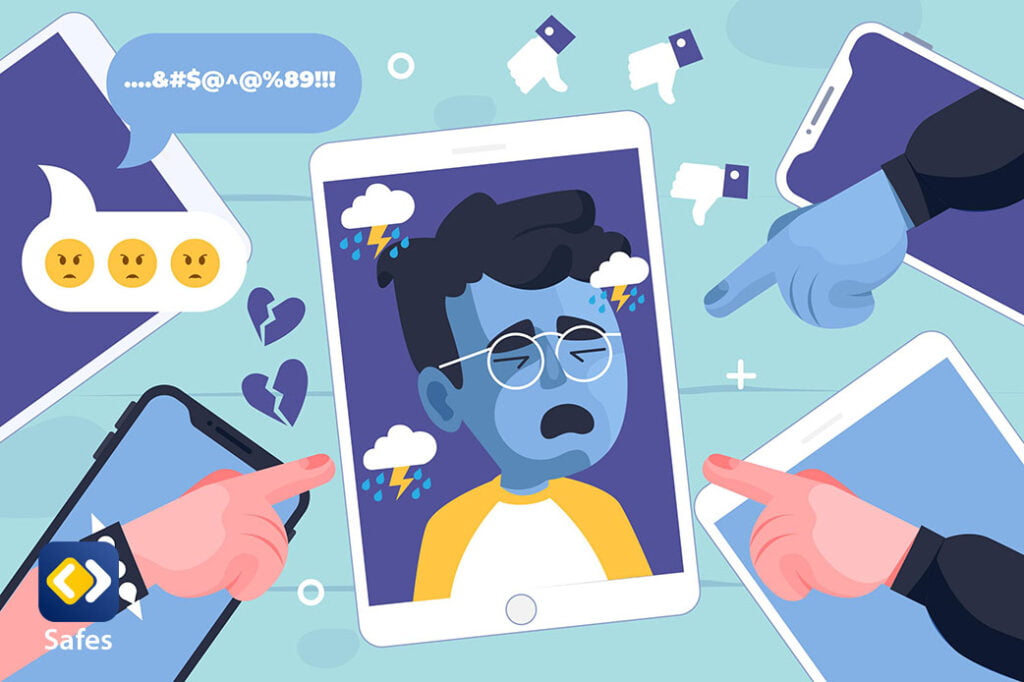The ever-changing technological landscape provides new opportunities every day that were once possible only in science fiction. Deepfake technology, the manipulation of audio and visual content, is one of these technologies that can facilitate life and work for human beings. But just like any other technology, it can be dangerous. Since children are more vulnerable to these threats, deepfake technology has been raising concerns among parents. In this blog post, we’ll talk about the dangers of deepfake and how parents can protect their children from them.
Understanding Deepfakes
A deepfake is a fake image, video, or audio created by using existing content that has been altered and manipulated with the intention to craft a fictional scenario. Deepfakes use deep learning artificial intelligence to forge an imaginary incident surrounding a targeted person that has never happened in reality. Deepfake examples are numerous: people may create deepfakes to gain political advantage, share celebrity or revenge porn, or spread fake news.

The Growing Threat to Children
In January 2023, a mother received a phone call from her daughter, telling her, crying, that she’d been kidnapped. The kidnapper then threatened that if she didn’t pay the ransom, he’d abuse her and then drop her in Mexico. After a few minutes of chaos and panic, the phone was revealed to be a scam, the daughter being safe and sound. Unfortunately, this is only one of the many deepfake attack examples.
Statistics show us that deepfake numbers have more than doubled from 2022 to the first quarter of 2023. This raises growing concern among parents. But why are deep fakes so dangerous? Let’s see:
The Deceptive Power of Deepfakes
The thing about deepfakes is that they have a strong power to deceive people. With the recent advancements in Artificial Intelligence, deepfake technology has been revolutionized, having the ability to craft scenarios so realistic that it’s almost impossible not to believe. AI kidnapping scams are one of the ways to make believable stories about a child. Another way is to create pornographic images or videos and then use them to get the victim to do what they want. These incidents can have lasting impacts on children, endangering their physical and mental health.
Risks to Online Safety
Deepfakes threaten children’s online safety. The stories that can be made up with deepfakes are boundless and depend on the intention of the person behind it: Scammers use these crafted contents to harass and groom children online. Deepfakes can also be a tool for identity theft and cyberbullying, which affects the entire family.
These online risks are serious, and parents should take proactive measures to protect their children from them. Research shows that safe online behavior in children is positively linked to their awareness of the seriousness of online dangers. Therefore, families and schools should be active in educating children about online dangers and safety measures.

The Role of Social Media Platforms
Social media platforms enable easy and fast communication between people from all around the world. Social media users can share data with the world with a click of a button. These characteristics are exactly what makes these platforms a breeding ground for deepfake scams. Deepfake producers can easily spread misinformation over social media and accomplish their mischievous schemes. The fear of a stained reputation would make children give in to their demands without properly thinking it through.
Having casual interactions with strangers online can increase the risk of being targeted by deepfake scams. Plus, children who have conflicting relationships with their parents are more likely to get close to people on the internet. So, how can we minimize the dangers of deepfakes for our children? You should foster a positive relationship with your child, but that’s not enough. You should also be involved in their online lives and monitor their activities. To do that, you can use a parental control app, such as Safes. It gives you full supervision of almost everything they do online and will also enable you to limit their access to inappropriate content. Finally, the good thing about this app is that it can be installed on all devices, such as iOS, Android, and Windows. Sign up for a free trial today!
How to Spot Deepfakes
Sometimes, AI deepfakes are very realistic. But more often than not, most of them manifest some incongruities. For example, if you pay close attention, you will see that some facial features are placed weirdly or that the person’s posture and movements are unnatural. You might also see poor audio or lip-syncing, as most deepfake producers tend to focus more on visuals. Plus, since generating deepfakes takes a lot of work and time, most of them are short. To detect deepfakes, pay close attention to the details, but don’t forget to do some fact-checking, verifying the authenticity of the presented content in other sources.
Conclusion
In closing, the rise of deepfake technology poses a significant threat to children and teenagers in the digital age. The potential to mislead and manipulate is greater than ever before. However, by understanding the dangers of deepfakes, promoting media literacy, and working collectively to address this issue, parents and educators can help protect children from the dangers lurking in the shadows of the internet. Vigilance, education, and proactive measures are our best defenses against the deceptive power of deepfakes, ensuring a safer digital future for the generations to come.




